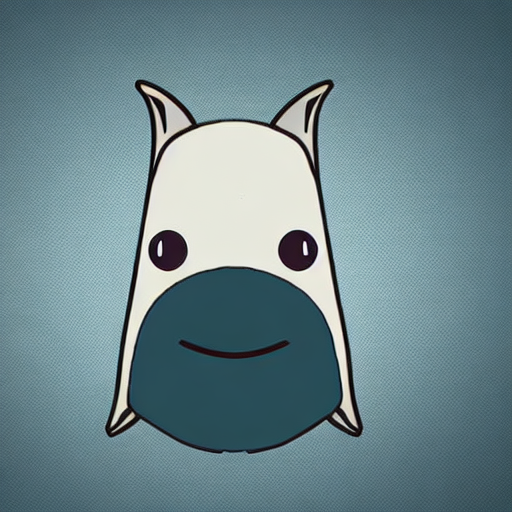OpenCV
Appearance
OpenCV is a very popular computer vision and image processing library.
There are bindings for C++, Java, JavaScript, and Python
Installation
- Download Python 3
Free algorithms only
pip install opencv-contrib-python
Non-free Algorithms
You need to compile OpenCV from source alongside OpenCV-contrib.
Compile opencv-contrib-python
You can build a wheel to install which includes NONFREE modules as follows:
- Install all dependencies listed in the build tutorial
sudo apt install -y libavcodec-dev libavformat-dev libswscale-dev
sudo apt install -y libgstreamer-plugins-base1.0-dev libgstreamer1.0-dev
sudo apt install -y libpng-dev libjpeg-dev libopenexr-dev libtiff-dev libwebp-dev libjasper-dev
sudo add-apt-repository "deb http://security.ubuntu.com/ubuntu xenial-security main"
sudo apt update
sudo apt install -y libjasper1 libjasper-dev
# sudo apt install -y tesseract-ocr* liblept5 leptonica-progs libleptonica-dev
- Setup a build environment
conda create -n opencvbuild python=3.7
conda activate opencvbuild
conda install -c conda-forge pyqt
- Make a wheel
git clone --recurse-submodules [email protected]:skvark/opencv-python.git
cd opencv-python
export ENABLE_CONTRIB=1
export CMAKE_ARGS="-DOPENCV_ENABLE_NONFREE=ON -DWITH_QT=5"
python setup.py bdist_wheel
Compilation Instructions
See https://www.pyimagesearch.com/2018/08/15/how-to-install-opencv-4-on-ubuntu for instructions.
cd ~ git clone [email protected]:opencv/opencv.git git clone [email protected]:opencv/opencv_contrib.git cd opencv mkdir build cd build cmake -D CMAKE_BUILD_TYPE=RELEASE \ -D CMAKE_INSTALL_PREFIX=/usr/local \ -D INSTALL_PYTHON_EXAMPLES=ON \ -D INSTALL_C_EXAMPLES=OFF \ -D OPENCV_ENABLE_NONFREE=ON \ -D OPENCV_EXTRA_MODULES_PATH=~/opencv_contrib/modules \ -D PYTHON3_EXECUTABLE=~/anaconda3/envs/tf2/bin/python \ -D PYTHON3_INCLUDE_DIRS=~/anaconda3/envs/tf2/python3.7m \ -D PYTHON3_LIBRARIES=~/anaconda3/envs/tf2/lib/libpython3.7m.so \ -D BUILD_EXAMPLES=ON .. make -j16 sudo make install sudo ldconfig
Usage
Getting Started
import cv2
# cv2.IMREAD_ANYCOLOR = 4
# cv2.IMREAD_ANYDEPTH = 2
# cv2.IMREAD_COLOR = 1
# cv2.IMREAD_GRAYSCALE = 0
# Use cv2.IMREAD_GRAYSCALE to read in grayscale
my_image = cv2.imread("my_image.png", cv2.IMREAD_GRAYSCALE)
# Perform some modification
# Do your machine learning here
# Write your output image
cv2.imwrite("my_modified_image.png", my_image)
Resizing an Image
import numpy as np
import cv2
img = cv2.imread('messi5.jpg')
new_img = cv2.resize(img, (500,200), interpolation = cv.INTER_CUBIC)
Video
Reading Video
video_capture = cv2.VideoCapture(path.join(videos_folder, video_filename))
if not video_capture.isOpened():
print("Error opening video stream or file")
sys.exit(0)
frame_num = 0
while video_capture.isOpened() and frame_num < 30:
ret, frame = video_capture.read()
if ret:
cv2.imshow('Frame', frame)
frame_num = frame_num + 1
if cv2.waitKey(25) & 0xFF == ord('q'):
break
else:
break
- Parameters
# Resolution
width = int(video_capture.get(cv2.CAP_PROP_FRAME_WIDTH))
height = int(video_capture.get(cv2.CAP_PROP_FRAME_HEIGHT))
total_frames = int(video_capture.get(cv2.CAP_PROP_FRAME_COUNT))
frame_pos = int(video_capture.get(cv2.CAP_PROP_POS_FRAMES))
Writing Video
C++ Video Write
Note that OpenCV does not handle audio.
output_video = cv2.VideoWriter()
codec = cv2.VideoWriter_fourcc(*"avc1")
fps = 15
image_size = (100, 100)
output_video.open("video_output.mp4", codec, fps, image_size, True)
if not output_video.isOpened():
print("Error opening output video")
# Write all of your frames
# while have_frames:
# output_video.write(my_frame)
# Release the video
output_video.release()
